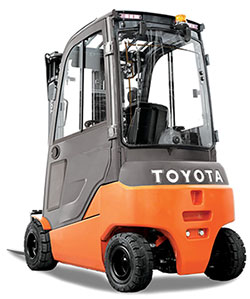Toyota Industrial Equipment's E-Book
The warehouse, or distribution center, is the hub of a successful material-moving business. So it's vitally important to make sure yours is operating efficiently, safely and economically. Along with the need for selecting the right equipment for warehouse operation, such as forklifts and other material movers, it is equally necessary to make the best use of your warehouse space, in regard to shelving, racking, and how to safely navigate through all of it. And of course, minimizing costs without sacrificing crucial innovations is always a good, strategic business practice.
For example, you'll find information inside that will help you with space planning for your warehouse or distribution center. There's a specific way to make an initial measurement of the area of your facility: ceiling height should start with the lowest ceiling-mounted components, like lights, sprinklers, ductwork, etc. Local regulations need to be taken into consideration when planning your highest racking level, as well as the actual lifting capacity of your forklifts.
Speaking of forklifts, did you know that your warehouse aisle width should be determined by the type of forklifts you'll be using in the facility? Starting with a forklift's actual width, measurements must be made beyond that to allow for details like pallet overhang, as well as the forklift's right-angle stacking position.
An often overlooked detail during the planning for optimum warehouse space usage is the location of structural columns. It's amazing how much storage, or otherwise usable space, is lost by the incorrect designing of racks and shelves around these columns. If your facility has these routinely spaced floor-to-ceiling columns throughout, you need to consider their locations in your new, or revised, space plan. Simply switching the racking from vertical to horizontal, for example, can incorporate the columns into the line of shelves, hiding them, while opening up more floor space.

